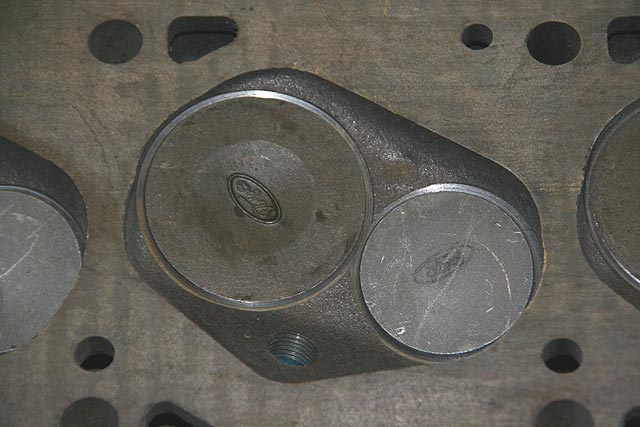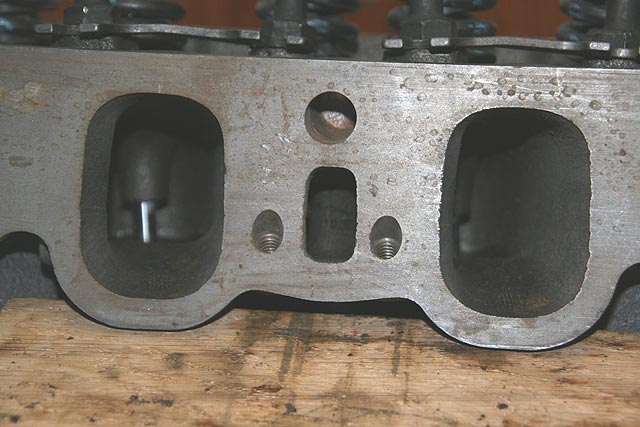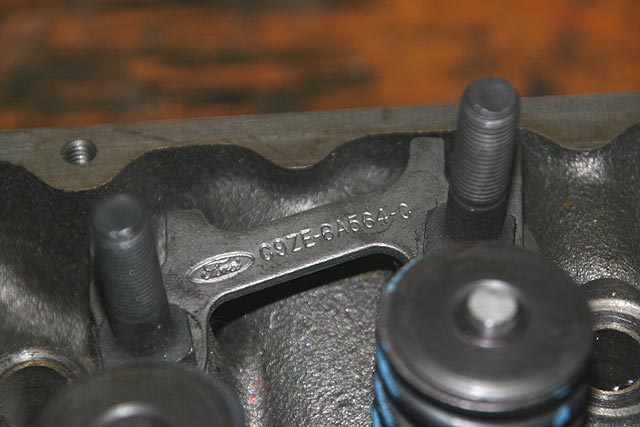
Pantera
Club
 |
Colorado Pantera Club |
||
Rebuilding a Ford 351 Cleveland
Part 4: Ford 351C Cylinder Heads
| Let's take a look at my cylinder heads. - Matt Hannes | ||
Original Heads. As discussed earlier, my cylinder heads are the large open chamber style (Ford casting D3ZE-AA). Although there's nothing physically wrong with them (other than a lot of carbon build-up on the valves), I am replacing them with a set of earlier "quench" chamber heads. This is for two reasons. First, the quench heads promote better combustion with less detonation, although I will have to switch to flat-top pistons to keep the compression ratio reasonable.

Secondly, the D3ZE heads have fixed non-adjustable rocker pedestals. Since I plan to convert to a roller camshaft, most aftermarket conversion kits require the use of adjustable rocker pedestals. So I would have to have these heads machined to accept screw-in adjustable rocker studs. So I decided to see if I could track down a set of the quench heads.
| "New" quench heads. I acquired a set of original Ford quench heads (casting D1AE-GA). These have the smaller wedge-shaped combustion chambers as seen here. They're 64 to 67cc which computes to a healthy 10.6 to 10.7 compression ratio with flat-top pistons. They also have the adjustable rocker arm studs which I will need for my camshaft conversion. |  |
||
| Quench chambers. The wedge chambers used on early Cleveland heads had excellent combustion properties but unfortunately were not emissions-friendly. The shape of these chambers cools the flame front and increases mixing, meaning less chance of detonation and more low-end torque.
In the glory days of leaded gas and no emissions tests, Ford offered these heads paired with pop-up pistons for an 11.1 compression ratio right from the factory. |
 |
||
| Top view of the quench heads. Here we see the 7/16" diameter screw-in adjustable rocker studs and push rod guide plates. These are all Ford parts designed for use on high-revving Clevelands with mechanical camshafts. I'll need the adjustable studs and guide plates for my roller cam conversion. |  |
||
| Intake ports. Cleveland heads (and Boss 302 heads as well) are famous for their giant intake ports. Here we have a good look at a pair of them. The intake ports are 2.50"x1.75". |  |
||
| Exhaust ports. They are quite large at the mating face (2.00"x1.75") but are actually shallower further inside the casting. |  |
||
| Rocker studs and guide plates. My 1973 heads weren't equipped with these, and I'll need them for conversion to a roller cam, so finding a set of quench heads with these features in place will save some machining dollars. Note: I later discovered that the Ford guide plates seen here would bind up my new CompCams valvetrain. I ended up having to replace the Ford guide plates with CompCams guide plates to get everything to align properly. |
 |
||
Click here to return to the home page.
Contents copyright 2009-2010.